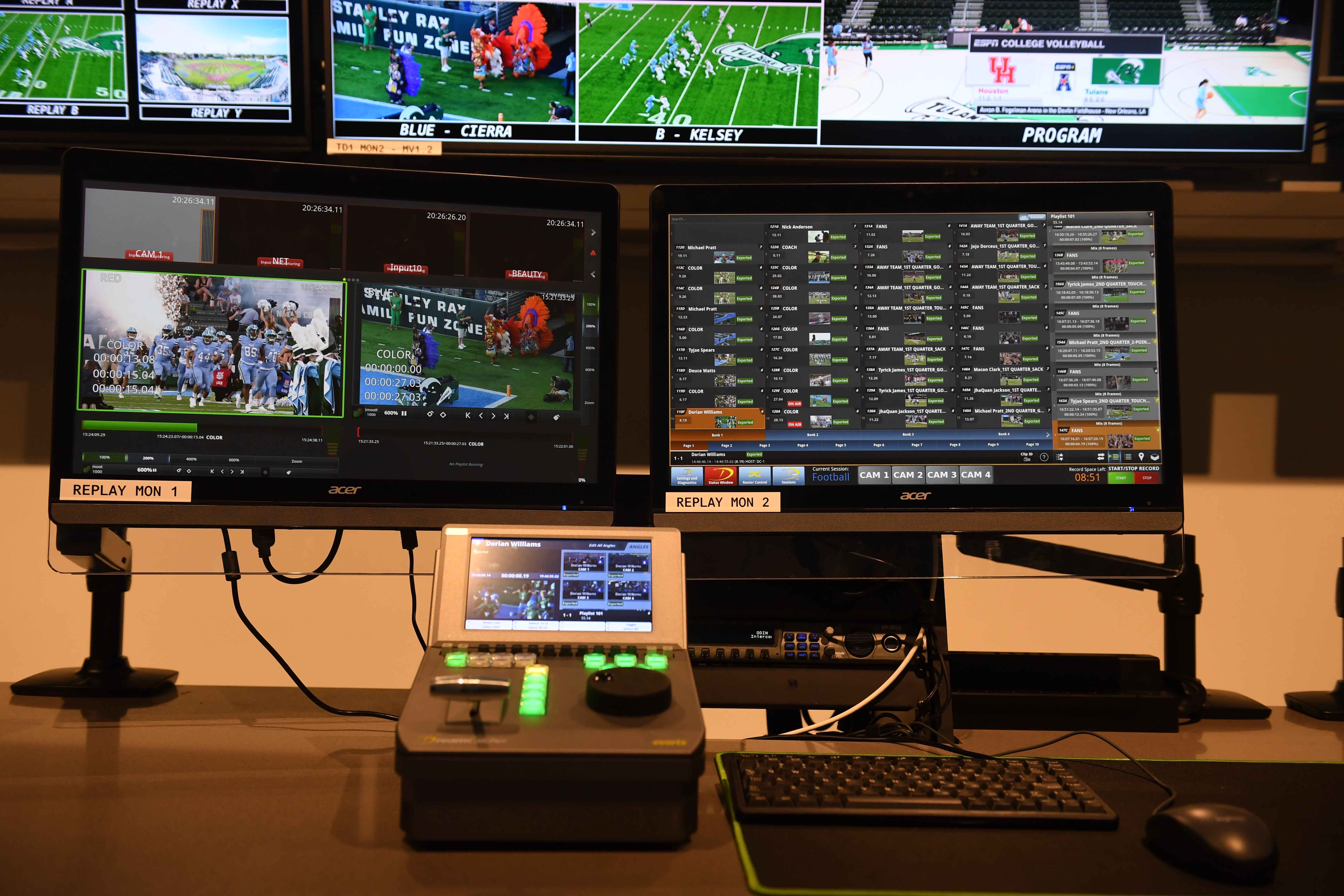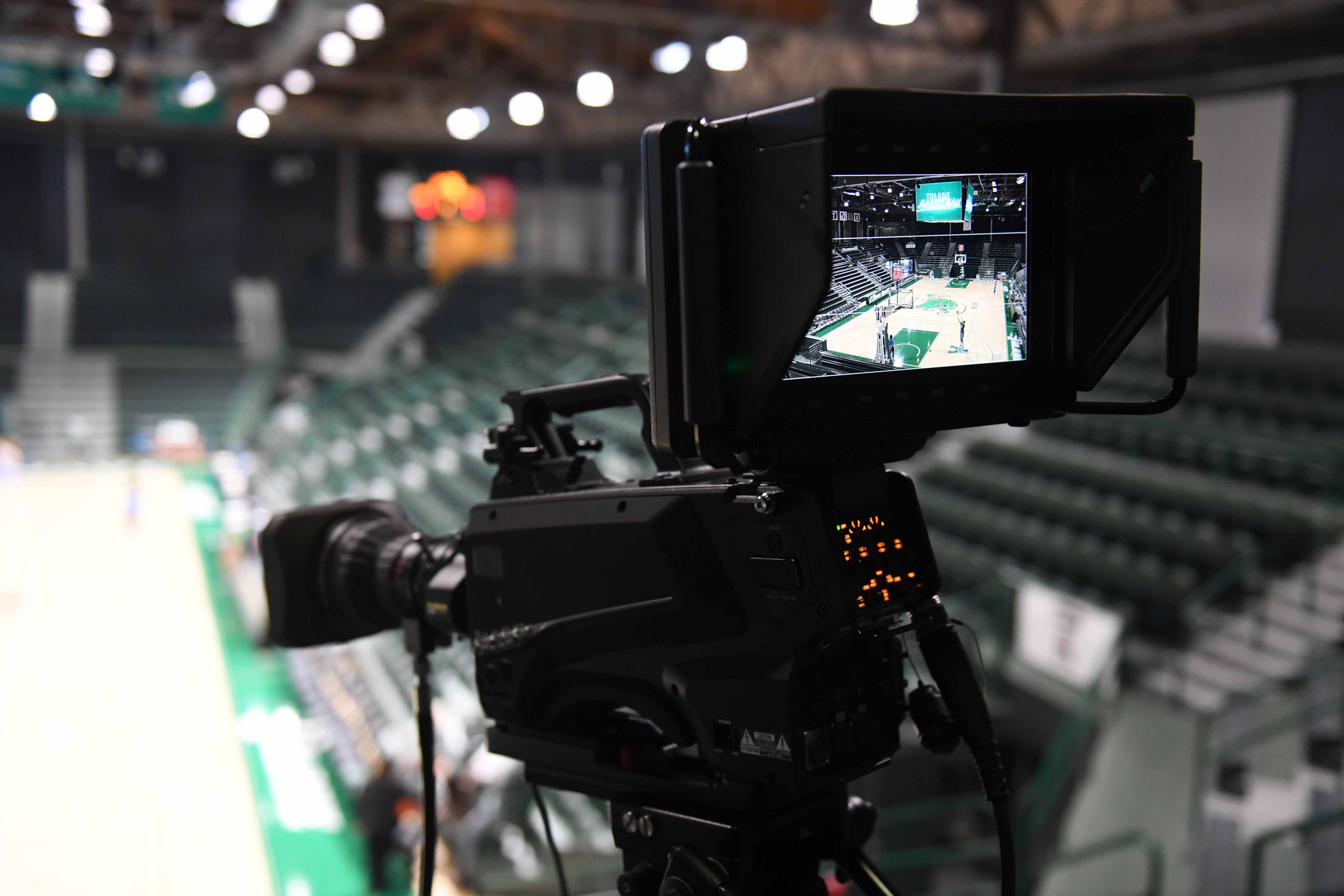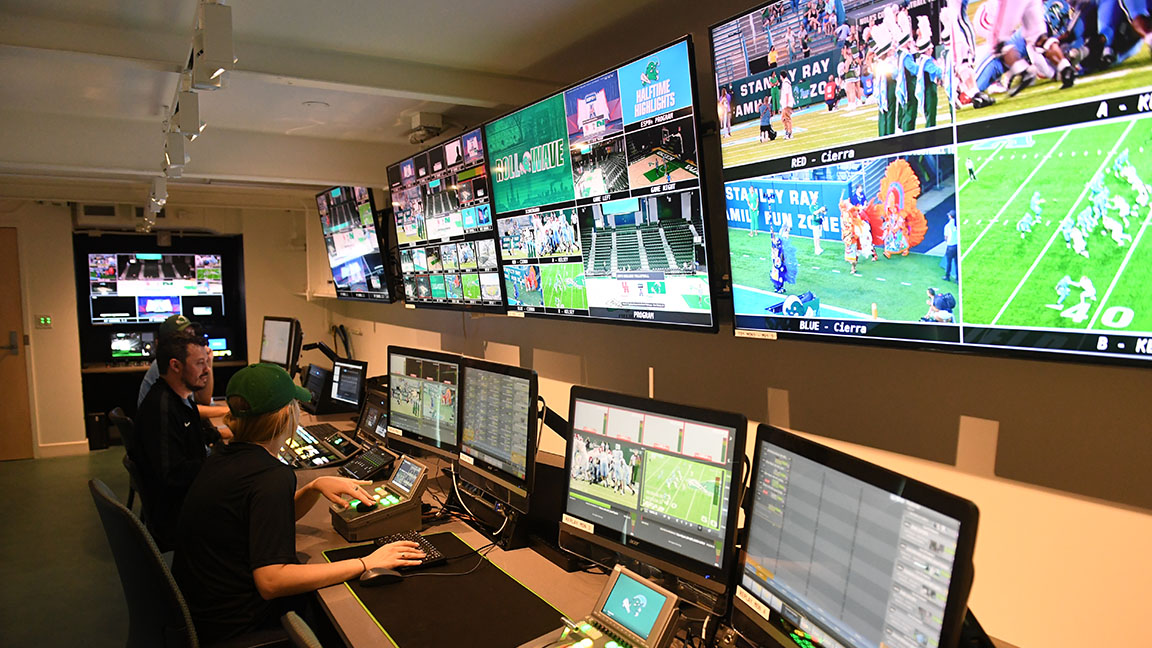The autumn signals change like no other season, a change that students and faculty in higher education work through every year. Along with the resumption of campuses comes the return of fall sports, an activity that bonds students and the surrounding communities. This is certainly the case with Tulane University, an NCAA Division 1 American Athletic Conference (“The American”) organization with 17 varsity teams.
Based in New Orleans, Tulane hosts its home football games at Yulman Stadium, a 30,000-seat, open roof venue that opened in 2014. Yulman Stadium is one of three premier sports venues located on campus, including the adjacent Turchin Stadium (baseball) and the Avron B. Fogelman Arena in Devlin Fieldhouse, home of Green Wave men’s and women’s basketball (and later volleyball) since the 1930s. Home games for all three teams are broadcast from these venues, which also welcome tens of thousands of fans for the games each year.
[d&b Soundscape Enlivens Seamless Tunnel Experience at Cleveland Cavaliers Power Portal]
Around the time when The American signed a new 12-year, $1 billion deal with ESPN, the Tulane University Athletic Department began considering upgrades that would raise the production value for live broadcasts and the in-venue fan experience. This required a near complete reimagination of their AV and broadcast infrastructure, including a new centralized control center to manage productions.
Control Room Choices
Of course, being based in a busy urban area, along with the usual challenges of finding green space on a university campus, left Tulane University with limited options for the new facility. “Space is always a premium on campus here,” said Andrew Alvarez, director of video and broadcasting, Tulane University. “As we worked to identify the right location, we realized that refurbishing an existing space was our only viable option.”
Alvarez and his colleagues envisioned a 1,500-square-foot space that could accommodate overlapping productions, and set their sights on an area inside Fogelman Arena that would provide substantially more room than the existing facilities.
Finding a much larger space also meant that it was time for significant technology upgrades to improve in-venue and outbound production value. In addition to enhancing control room technology and certain venue systems, it also meant establishing a completely new fiber and IP infrastructure between the control room and three venues.
While Alvarez would lead the charge from the inside, it was clear that a job of this scope required outside assistance. The decision was easy in the end, given Woodson’s previous experience with Technical Services Group (TSG), a Baton Rouge-based company, while in a similar role at Rice University. The fact that TSG has near equal experience with broadcast and AV integration projects, and has experience with ESPN+ streaming systems—a key component of Tulane University’s broadcast services—solidified their decision.

The building itself was constructed in 1933, and the space identified for the new control room showed clear signs of age. Lachin Architects was brought in to help TSG reimagine the space.
“We had to find a way to work within the existing framework,” said AV engineer Jason Martin, lead TSG systems architect for the project. “Many steel beams and bulkheads added decades ago were in the way and simply immovable. As we planned a design around these obstacles, the Tulane Athletics Department brought in a general contractor and electrician to gut and rebuild the space. They completely redid all of the finishes, and installed a new electrical infrastructure and transformer.”
The new electrical infrastructure provided TSG with a dedicated feed for the control room, as well as a smaller adjacent studio space they had envisioned for press conferences and similar needs. “The dedicated feed is important to the integrity of the signals and production,” said Martin. “Without that, the custom production team is sharing their electrical with the rest of the building. That can create havoc on the technology, such as interference from stadium lighting.”
New Fiber Infrastructure
With outside electrical interferences gone, TSG and in-house technicians considered the interconnects to and from the three venues. They also worked closely with the campus IT department to establish a new fiber run. More than 100 strands of fiber were run between all locations, some being “dark fiber” that can immediately light up if other strands fail. Individual fiber strands are used for each camera feed, as opposed to muxing camera signals.

“Camera signal muxing is increasingly common, and that brings many different camera feeds onto a single fiber or sometimes a pair of fibers,” said Martin. “All it takes is somebody tripping over the wrong cable to bring the entire show to a screeching halt. It costs a few more dollars to use individual strands for each camera, but it provides that extra layer of security for staying on the air if any fibers are damaged during the production.”
[Texas A&M Sports Production Team Upgrades Facility With Dante]
TSG opted for single-mode fiber to optimize video signal distance, and added Cat 6a network cable and connectors to interconnects between all locations. Custom-built patch bays with Attero Tech Dante I/O boxes are used with the single-mode fiber at the venues. TSG also installed patch bays for SMPTE camera cables with both LEMO and Neutrik opticalCON DRAGONFLY connectors, both of which are positioned around the venues for live video acquisition.
There is also an IP network backbone between the switches. “We are using Extreme Networks’ new 5520 switches,” said Martin. “These are data center-grade switches used for communication between the venues. We have a 10 Gig fiber path for Dante audio between the control room and Yulman and Turchin stadiums, and we use that same pipe to move control data between the venues and master control.”
[SCN Hall of Fame 2022: Aidan Williams]
Video moves over a separate fiber path, with Evertz 3405 fiber-optic SFP BNC frames powering transport. The high-capacity bulk optical conversion platforms can accommodate 16 Evertz 3405 Series SFPs and up to 32 optical-to-electrical (or vice versa) conversions. According to Martin, this is one of the first facilities to use Evertz’s Scorpion MIO Dante modules for 64-channel Dante-to-TDM conversion.
“MADI has traditionally been used for broadcast applications and Dante for AV,” he explained. “The way we have configured this system just creates this huge universe of end points that the customer can leverage. That is very unique—and we will see a lot more of this in the future.”
Resolving Signal Flow
The Evertz gear, which also provides the routing and control solutions, is mostly centralized in master control. The facility’s central EQX10 3G-SDI routing platform incorporates a wide variety of Evertz EQX modules to manage video processing, synchronization, and audio embedding and de-embedding and channel shuffling. The solution also integrates redundant Evertz MAGNUM servers, bringing everything inside the router under a single point of control, including Dante audio control.
“Many venues still just use Dante on the edge devices, but this system utilizes Dante as the true audio backbone,” said Martin. “We are routing Dante natively within MAGNUM control software, and this is also very new and unique.”
Evertz VUE-Touch rack-mountable control panels add further value inside the control room; the touchscreen panels are tailored with VUE widgets that interface with the router, multiviewer, and Ross Video infrastructure gear. The Ross Video gear plays an enormous role in the production workflow, with a Carbonite Black Plus production switcher, an Xpression real-time motion graphics platform, and Tria Express Duet servers all playing important roles.
All systems are ESPN and ESPN+ compliant for both broadcast and streaming productions. TSG designed two production workflows out of the Ross infrastructure, TD1 and TD2, which can be used separately or unified into “one giant workflow,” according to Martin. “We installed a single Carbonite Black Plus frame, and that is a 3 M/E switcher for two different productions,” he explained. “Rather than getting a 2 M/E control panel and 1 M/E, which is the traditional way, we decided to try a different approach. We procured two, 2 M/E panels, and everything comes out of the EQX router. We then mapped one of the mini M/Es inside the Carbonite platform to the second M/E on the TD2 panel.
“Since everything lands on the router and can recalled through the controller, we can make the TD2 side utilize two full M/Es. We can move things around as much as we want with this configuration. We can do a linear and a board show, two linear shows or two board shows, and the technicians can move the stations around as they please.”
The Fan Experience
The Ross gear plays an important role in the fan experience, both in broadcast and inside the venues. The control room features three instant replay operator stations, with 12 inputs and six outputs shared amongst the three. A collection of freelance operators use Evertz Dreamcatcher instant replay servers, which are also used at the nearby Superdome and Smoothie King Arena. “We wanted to use the same systems that the local replay talent pool are used to,” said Martin.
TSG went with the “married system” approach for replay to avoid what he calls “push-pull” between the different users. All replay content exists in a single database and is available to all three operators in real time. Replay content plays out on Daktonics video boards in each the venues.

“This new system tremendously improves our fan experience on campus,” said Jana Woodson, deputy athletic director for external operations, Tulane University. “A big part of that is because our staff and crew has modern equipment that better streamlines the workflow. Our fans can enjoy more amenities through in-venue elements that include videoboard capabilities, but also new fan interaction content capabilities that come with the new studio.”
The small studio is the one that TSG carved out next to the control room. In addition to press conferences, the studio often hosts video shoots for athletes that are then shared with the replay operators. The studio includes a Dracast DRK1000 B3K lighting kit and a bluescreen that production staff can use to create varied, colorful backgrounds. TSG also added audio jacks for wired and wireless microphones, SMPTE camera connections, and two permanently mounted Panasonic AW-UE70 PTZ cameras.
Audio Investment
Audio capture and networking were the biggest investment inside the venue, along with patching systems to move audio and handheld camera signals—TSG supplied a Panasonic AJ-PX800 that is shared between venues—back to the studio. “We built XLR inputs and outputs on the patchbay systems that tie to the Attero Tech units,” said Martin. “They can patch to any of our field plates, and provide input and output points in the technology core that serve any of the three venues. All of that audio is transported from those venues back to master control over the Dante network.”
Shure shotgun microphones are used along with a Jony Shot parabolic microphone reflector inside the venue to capture crowd noise. These can be carried between venues and temporarily mounted. In addition, Shure wired lavalier microphones and boundary microphones with inline preamps are used most often for basketball games.
“These are mainly used in the arena to pick up the sound from the court itself, whether along the boundary to pick up the rumble of the feet, on the backboards to catch the bounce of the ball, or near the rim to pick up the swoosh of the net,” said Martin. “Neutrik opticalCON DRAGONFLY I/O boxes are used at both baskets to make the patching and unpatching as seamless as possible.”
Martin said Tulane University is the first to add DRAGONFLY boxes to athletic venues in America, adding that Neutrik’s expanded beam technology is what makes the product so special. This is especially important on the video side for camera content acquisition in the venues.
“There is a mating connector that focuses the camera signal back down into a fine fiber strand,” he explained. “In a traditional fiber system, a small speck of dust can prevent the camera from operating. With these Neutrik connectors, the user can literally just exhale a little air from his or her mouth or from a can of compressed air. From there, the user can simply plug in and go. There is no more need to drag fiber cleaners along with the camera, or cross your fingers and hope that the optical strength is there in both directions upon plugging in the camera. It is a very special innovation in in both the AV and broadcast world.”
